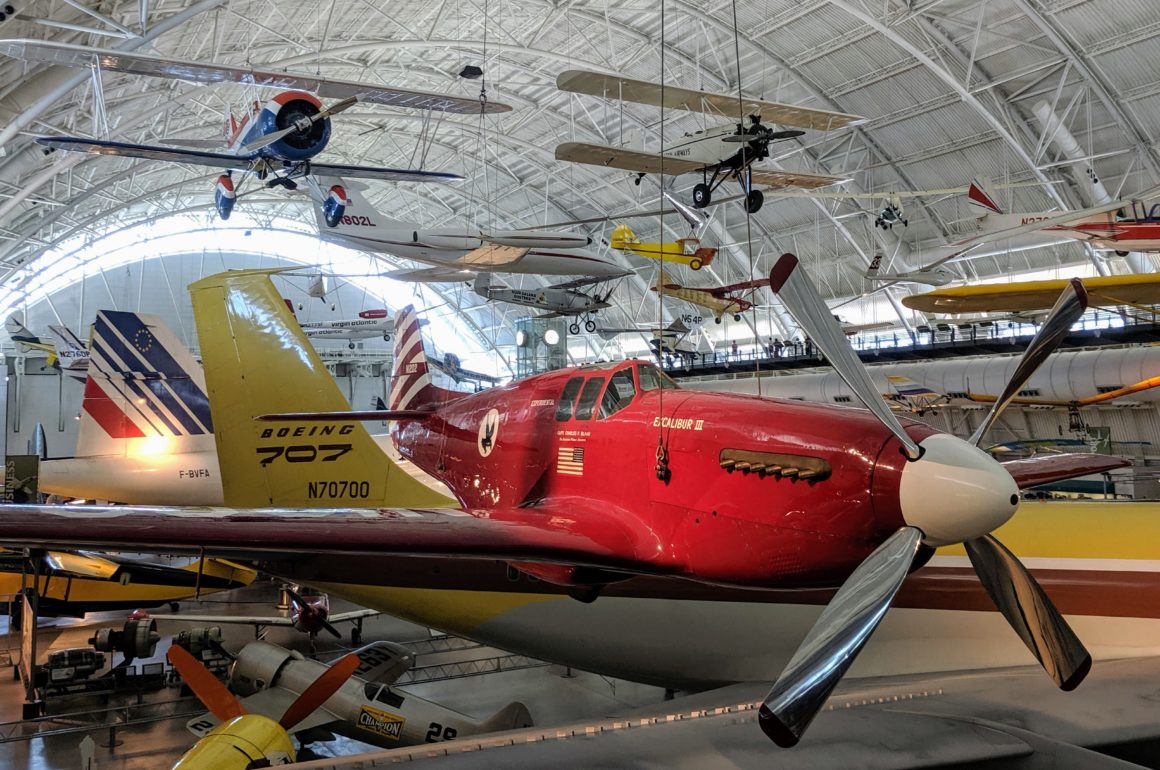
Some things are just fun and fascinating to see. It was with that mindset we visited the Smithsonian’s Udvar-Hazy Center. Getting to see the Space Shuttle Discovery up close and personal was beyond fun and fascinating. It was awesome. And, it was a testament to man’s ingenuity and dedication.
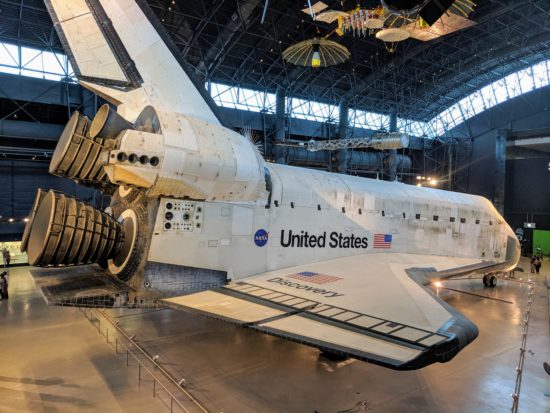
Steven F. Udvar-Hazy Center
Most visitors to Washington, DC are well-aware of the Smithsonian Air & Space Museum in the heart of the city. I suspect though that many visitors do not realize there is a second site for the museum located about thirty miles west of DC, near Dulles International Airport, in Chantilly, Virginia. The site is known as the Steven F. Udvar-Hazy Center.
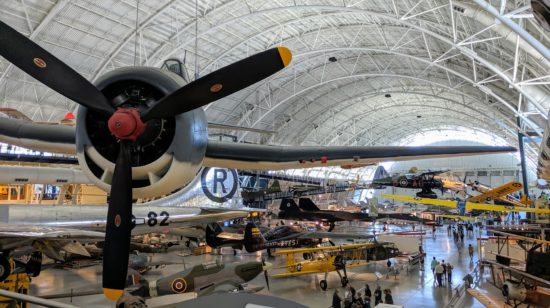
You don’t have to be a dedicated follower of the space program or for that matter even a fan of Star Trek and/or Star Wars to appreciate the history of flight and space. Although, if you are a big fan of air and space, the center is must-see stop for you. It’s an ideal road trip destination that everyone will enjoy.
While both air and space sites offer a host of information, history and actual flying machines, the Udvar-Hazy Center offers it all on a grand scale. I’m talking, huge!
Space Shuttle Discovery
What I don’t know about the air and space program could fill a book; I am, I confess, completely clueless. When you watch a drama unfold on television, from the comfort of your sofa or favorite chair, you can’t fathom the sheer magnitude of what you’re watching. Its one of those fun and fascinating things you just have to see for yourself.
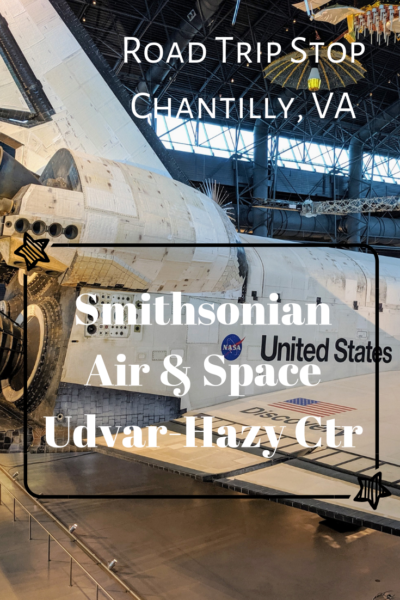
With a wing/hangar pretty much all to itself, at at the Udvar-Hazy Center, the Space Shuttle Discovery is the star of the show. How can anyone not be impressed by such an incredible flying machine? Because I know so little about the space shuttle I did a little digging and learned:
- “Discovery has earned a place of honor in the collection of national treasures preserved by the Smithsonian National Air and Space Museum. The longest-serving orbiter, Discovery flew 39 times from 1984 through 2011 — more missions than any of its sister ships — spending altogether 365 days in space. Discovery also flew every type of mission during the space shuttle era and has a record of distinctions. Discovery well represents the full scope of human spaceflight in the period 1981-2011.” airandspace.si.edu
The Air France Concorde
If you know me at all you know that I loathe everything about flying. In my book it’s a necessary evil to get where I want/need to go. I have to admit though, I was keenly interested in seeing the Air France Concorde. I would have been even more interested if we had been able to see the interior of the plane. Just how cozy and compact was it in there? I think know I’d put up with the cramped knee space if I could shave off three hours of a cross Atlantic flight.
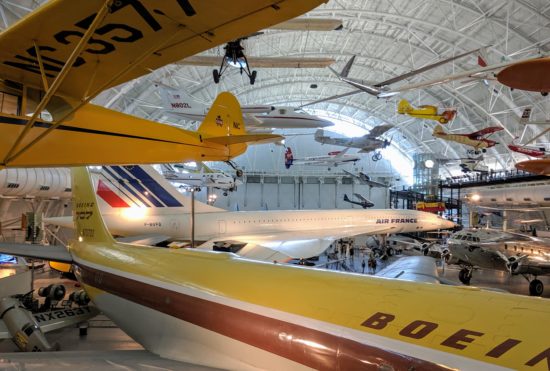
The Concorde was actually in service for 25 years. It was able to reach speeds of 1,350 mph (2,170 km/h) and had four Rolls Royce engines. For some reason I found that little tidbit of the Rolls Royce engines amusing. With a capacity to carry just 100 passengers, the Concorde catered to first-class clientele. The cost of a seat on the Concorde was pricey at best, too pricey for the average passenger. And, since I’d be an average passenger, I’d be out of luck if the Concorde was still flying. Bah!
If You Go
- 14390 Air and Space Museum Pkwy, Chantilly, VA 20151
- 10:00 a.m. – 5:30 p.m. every day except December 25
- Free admission (all Smithsonian Museums offer free admission)
- Parking fee is $15
- Public Transportation options
- Free admission to the observation tower
- Free guided 90-minute tours at 10:30 and 1:00
- Imax Theater requires paid ticket – wheel chair accessible, closed captioning and audio
- Flight simulators require paid ticket
- A large McDonald’s is the only food outlet
- ATM in Museum Store and IMAX Theater box office
- Multiple restrooms
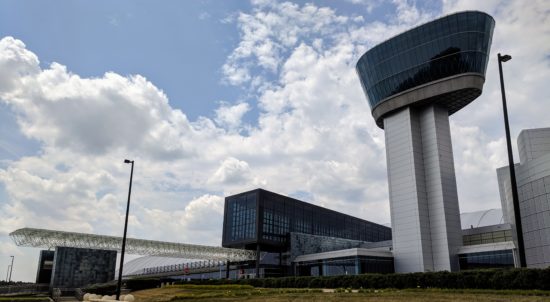





















 #postcardsfromthewo
#postcardsfromthewo





 New post on blog, link in
New post on blog, link in 






Definitely a must-see for any aircraft or space enthusiast… have had the opportunity to see many of these in flight over the years and seeing them at Udvar-Hazy Center is always a treat. The entrance is spectacular with an SR-71 front and center with shuttle Discovery visible in the background… quick glances to either side reveal the scale of the UHC, having no trouble housing the aforementioned aircraft as well as the Enola Gay (B-29), Concorde, Lockheed Connie, Boeing 707 prototype, many WWII and Cold War aircraft, early flying wing aircraft, and VERY early aircraft that are too numerous to mention. I’ve been to UHC five times now (whenever I have an hour or more to kill at Dulles), and come away with a new favorite exhibit each time: Concorde, SR-71, Enola Gay, P-38, and yesterday Shuttle Discovery took the spot. Only the B-29 did I not have the pleasure of seeing in flight at some point… still love the unique sound of the P-38 lumbering past, and still have ringing in my ears from watching the SR-71 takeoff at Edwards/Dryden years ago
Per Ben’s comments, the Concorde is a beautiful aircraft, but was simply not a profitable endeavor. Technology was not an issue for Boeing to compete, but there was not a market for enough hull sales to make it a profitable program unless supersonic flight over land was allowed. Boeing at the time was perfectly willing to spend government money on development, but as soon as that dried up they calculated it would not be a profitable program (needed either supersonic over land or enough speed for two transpacific round trips a day… the latter WAS a technological issue) and dropped it. Boeing made the same calculation to not pursue a market with the Super Jumbo (A380) and it looks like Airbus will likely never turn a profit on that program either. You may be right with Boeing bad-mouthing competitors… I think they do it now, so probably did it then as well, but that is commonplace in business, no? Anyway, I love the Concorde, but the Boeing SST program was killed not for technological shortcomings, but because there was no market for it (or the Concorde), as airlines simply could not make a profit operating the beauty.
Patti, I saw the Columbia Space Shuttle in 1979 at Eglin AFB in Florida when it arrived via piggyback on a Bowing 747 in route to the Kennedy Space Center. I still have a few BW photos of it stored somewhere. It was a very exciting day for me. I also remember when it burned on re-entry some years later. I think that one was attributed to a heat shield. We are about two hours away from the new Space X launch pads and have see launches from our community dock a few times. Space exploration is intriguing to me and I am excited to see what the future holds now that private companies are getting involved. The downside of course is where they want to locate new launch pads and the associated dangers to our natural habitats and developed areas. We are in a ‘be careful what you wish for’ frame of mind in Florida.
I did not know there was a second museum in VA. We have been to the one in DC and loved it. Will make a visit next time we are through that area of the country. As to Ben’s comment, I think we all suspected something along those lines at the time. It was just too abrupt and the explanations were flimsy. I keep thinking that someone like Elan Musk will resurrect it from the junk pile. How nice to think of going from the US to Australia is under 6 hours.

suzanne vosbikian recently posted…My Experience With Heat Exhaustion
I’ve had a couple of people tell me they saw the space shuttle being piggy backed. That must have been such a sight to see, we would have loved it.
The Udvar-Hazy Center is different from the Air & Space in DC in that it is massive in size and houses all of the BIG planes, as well as many smaller ones. It’s really something to see and experience. I’m sure you’d enjoy it.
The shuttle tour across the U.S. was a site to see… it passed over Moffett Field/NASA Ames during that tour and it was very impressive. Somewhere I have a photo I took where you can make out the pilot looking down at the crowd as they pass… very cool. On a side note, not sure what I was expecting, but took a tour of the inside of the shuttle carrier years ago and was briefly surprised with the mostly empty interior ( save for a few seats ip front). Very unique aircraft for sure. Rarely see things I’ve not seen before nowadays (saw an LC-130 last week though), so these special aircraft at UHC make my day every time I visit!
Thank you, Doug, for posting such an informative comment(s).
Patti, as it happens I have had the opportunity to fly in the Concorde. I was working in aerospace at the time, for a demanding CEO of France’s leading defence electronics company and he called me on a Thursday morning to say he wanted to see me in his office Friday morning for some urgent matters. The only way to make that meeting was for me to fly on the Concorde from Washington to New York and then for the NY to Paris trip in three hours!
Since you ask about the interior, it was too single rows of seats one on each side of the aisle. Diminutive seats that were not comfortable AT ALL since they were made for people two thirds of my size. The food though was superb and honestly going from NY to Paris in three hours cannot be beat.
Now for the more serious issue…. as I was then deeply involved in French aerospace I can tell you for a fact that the killing of the concorde was a hit job by Boeing that simply could not compete at the time with that French English technology. All sorts of bullshit arguments were surfaced through political supporters of Boeing about things like noise pollution etc, all extremely minor and the sole purpose of the campaign was to minimize the useage on transatlantic flights so as not to destroy the lucrative sales of Boeing aircraft. Years later, by the way, I got a job as a VP of strategy at Boeing and I can tell you again for a fact that torpedoing competitors products to protect their own market, is standard operating procedure.
The concorde was a magnificent technological leap that France and England shared. There is absolutely no technical reason why we the flying public have been denied the opportunity for a three hour flight and a flight from New York to Australia would also have been a fraction of the nightmare it is today.
Ben
Thank you, Ben for leaving such an interesting and insightful comment! Really interesting about Boeing. I had no idea. And, thank you for letting me know what the inside of the Concorde was like. I still think I’d be more than happy to have bruised cramped knees in exchange for taking hours off of a cross Atlantic flight.
I’m a plane geek and would love seeing this place and getting up close to a Concorde. It doesn’t seem that long ago that it was in service…what a shame that it’s gone. I remember several times seeing them on the tarmac at Charles de Gaulle.

If I’m ever in Washington I’m going to this museum.
Frank recently posted…The Best and the Worst of Travel Forums. And dealing with Trolls, Haters, Expats, and other “Uglies”
If you’re a plane geek, Frank, this is definitely the place for you. SO many planes with such history. I can’t accurately describe what it was like to see Space Shuttle Discovery and its enormous size and what mankind accomplished flying the shuttle. And, yes, the Corncorde was very cool. Read Ben’s comment for his first-hand knowledge. Super interesting!